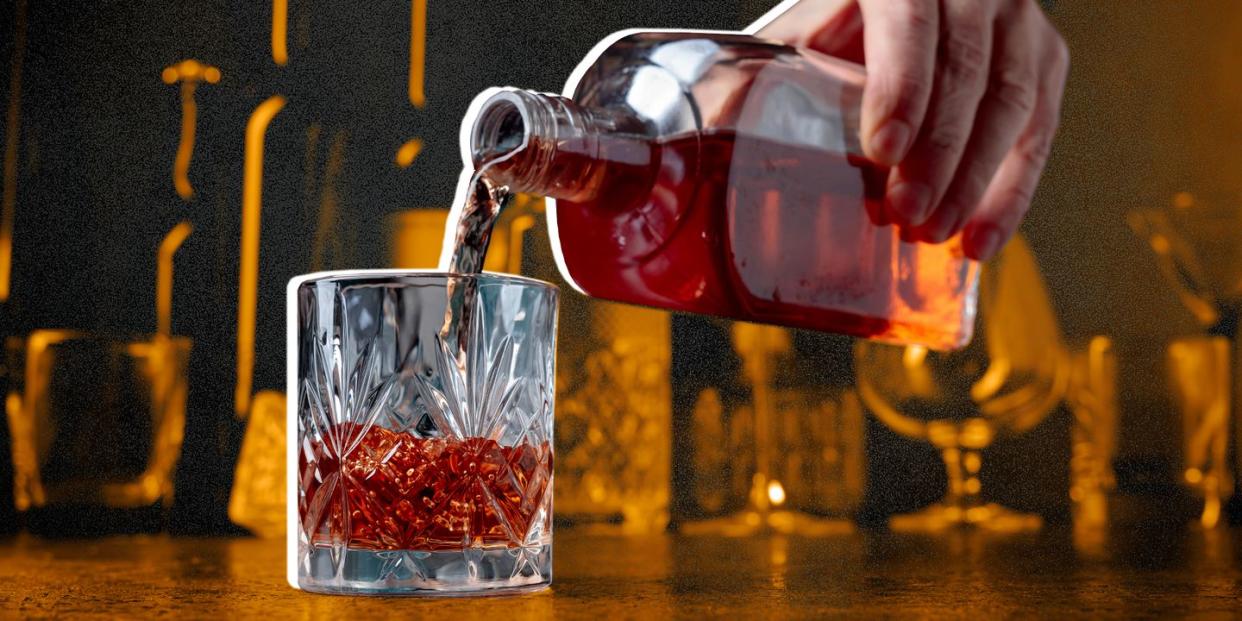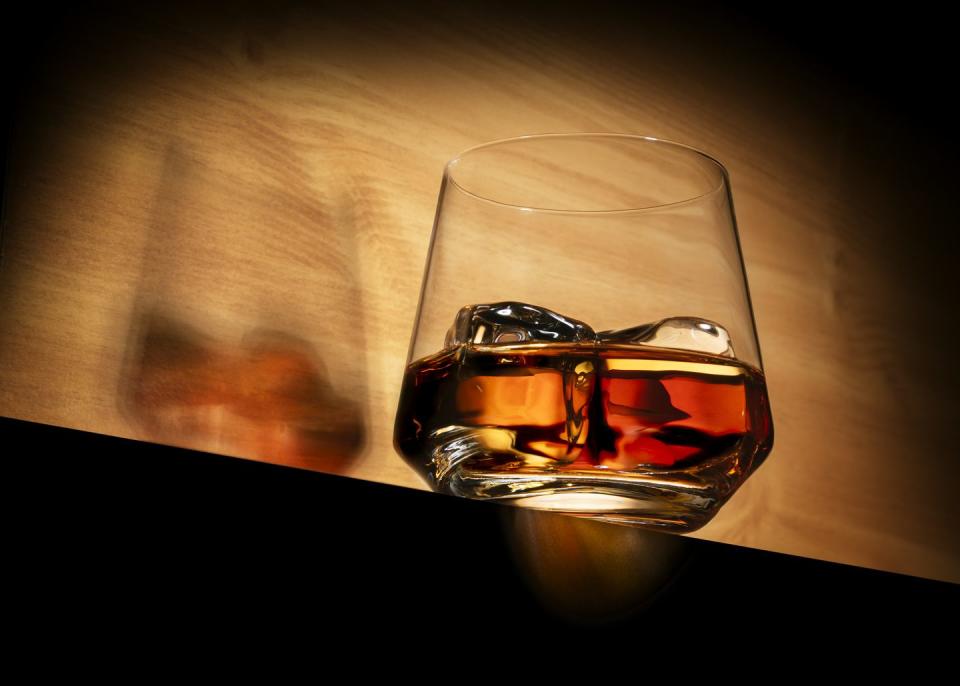What's the Difference Between Bourbon and Whiskey?

The perpetually quotable Mark Twain once said, "Too much of anything is bad, but too much good whiskey is barely enough." It's a sentiment that has certainly echoed through time—the word itself comes through various Celtic interpretations of the Latin phase aqua vitae, “water of life.” But with dozens of styles spread across the globe, whiskey can be almost as confusing as it is delectable. One of the most common conundrums? Understanding the difference between whiskey and bourbon. If you're feeling a little fuzzy on the subject yourself, or just want some fun facts to share next time you open a bottle, here's a primer on this essential brown liquor.
Whiskey
The earliest written account of whiskey making dates back to the late 1400s, and though its actual origins are murky, both the Scottish and Irish lay claim to its invention. Fermented from a mash of cereal grains (think: wheat, barley, corn, rye) and aged in wood barrels, it's one of the most diverse and widely-crafted spirits in the world, with Scotland, Ireland, Canada, Japan, and the United States being the biggest commercial producers.
While individual styles may impose particular specifications (Irish whiskey, for example, must be made with malted barley and matured in oak for at least three years) and even different spellings (expect to see "whisky" on bottles from Scotland, Canada, and Japan while Americans and the Irish go with "whiskey") it's ultimately a highly flexible category that includes a number of iconic styles including scotch, rye, and bourbon.

Bourbon
That's right, bourbon is whiskey. One of the most prominent styles of whiskey, in fact—American whiskey, of which bourbon is the most famous style, drove sales of nearly $4 billion in the U.S. in 2019; more than Canadian whiskey, Irish whiskey, and rye put together.
Considered one of the few true American spirits, bourbons must meet certain precise standards to earn the name, including being distilled from a mash containing at least 51% corn, getting aged in charred new oak barrels, and being bottled at a minimum of 40% ABV. The high percentage of corn and the vanillin compounds extracted from the charred oak during aging tend to give bourbon notes of caramel, vanilla, dried fruit, and spice. And despite the fact the it's nearly synonymous with Kentucky (the state produces as much as 95% of the world's supply), bourbon can legally be made anywhere in the U.S.
How to drink it
There's no wrong way to enjoy a good whiskey (in responsible quantities, of course) but to get every nuance, pros recommend taking at least a sip or two straight. If you find that a little potent for your tastes, a few ice cubes or drops of water will provide some dilution that makes the experience smoother on the palate and can actually reveal subtle flavors that the alcohol might mask.
Of course, that's far from the only way to bring your bottles into play. Whiskey is the basis for a number of classic cocktails like the Old Fashioned, Manhattan, and Sazerac while bourbon specifically serves as the spirit in beloved tipples like the mint juelp and boulevardier. Try your hand at a few of these timeless sips and, to really get a feel for the different styles, experiment with how switching up the type of whiskey can change the cocktail's flavor profile.
Must-Have Bottles
Whiskey
Bourbon
You Might Also Like


